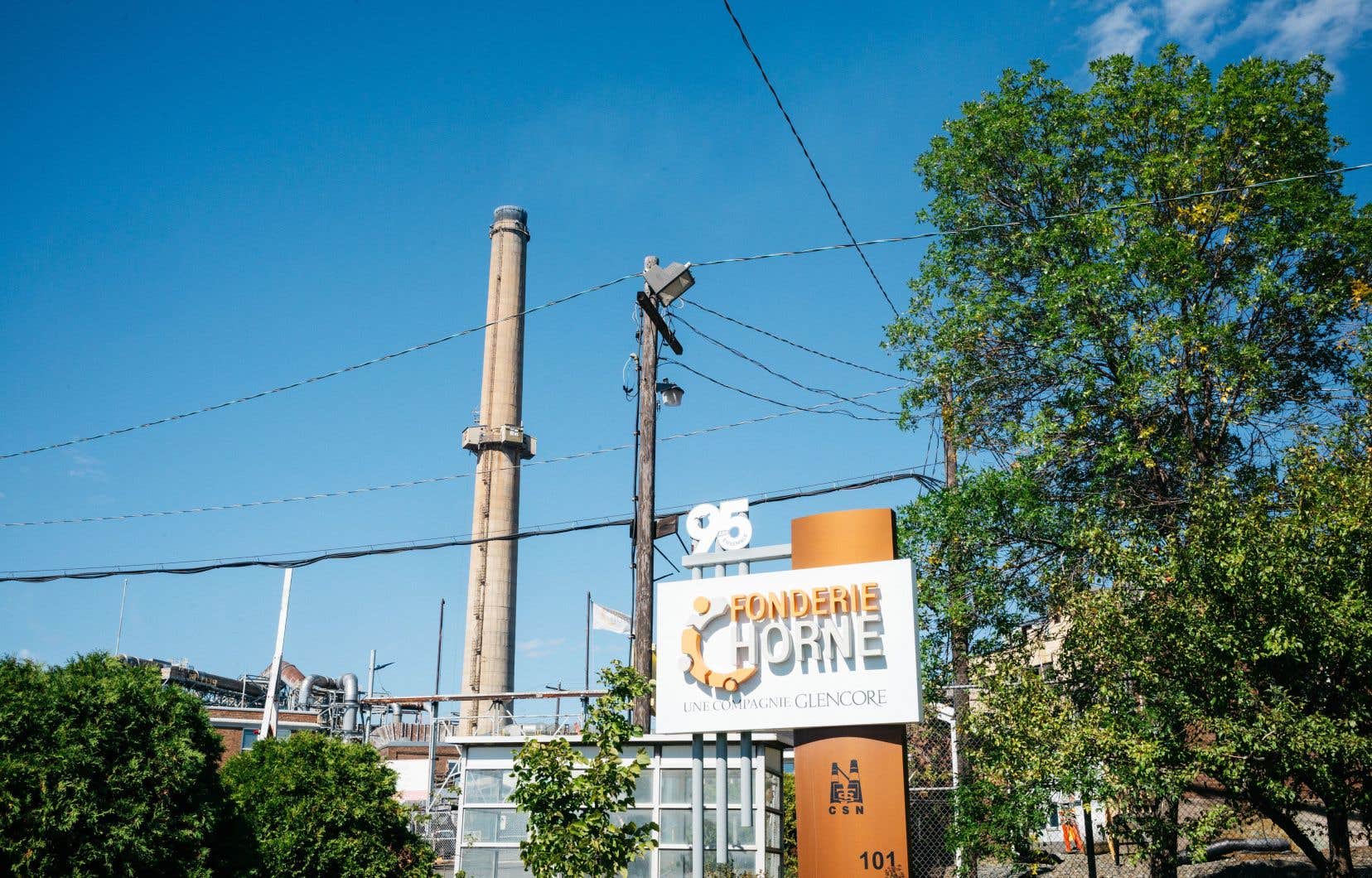The Horne Smelter has indicated that the annual average arsenic in ambient air at the Horne legal plant, located on its property, is 45 nanograms (ng) per cubic meter (m3) for the year 2023. This average is 15 times higher than the environmental standard, but it constitutes an improvement compared to previous years.
According to the managers of the Horne foundry, who held a press conference on Thursday, the annual average of arsenic in the air of Rouyn-Noranda in 2023 illustrates the effectiveness of the transitional projects implemented over the last two years.
“These measures have made it possible to reduce the average annual concentration of arsenic in the ambient air at Horne station by more than 70% since 2005,” said Marie-Elise Viger, environmental director for copper operations in North America. North.
Glencore, owner of the foundry, claims to have commissioned new dust collectors in recent years, improved “casting wheel capture” and built a new dome.
Still according to the foundry managers, average concentration calculations demonstrate that currently, “approximately 99% of the urban perimeter of Rouyn-Noranda is at 15 ng/m3 », which represents the target imposed on the company by the Quebec government a year ago. The annual standard set by the Regulation on cleaning the atmosphere is, however, 3 ng/m3.
The company predicts that the modernization project called “Aeris” should result in a reduction in the annual average concentration of arsenic in ambient air to 3 ng/m3 or less for approximately 84% of the urban perimeter of Rouyn-Noranda.
However, Glencore has not indicated how many years it will take to reach the legal threshold for arsenic emissions into the air.
Mothers at the front are not impressed
The Rouyn-Noranda group Mères au front, which has long campaigned for the foundry to comply with pollutant emission standards, is not impressed by the data revealed by Glencore.
“But how come after 20 years of exemptions, the company has not yet reached the standard? » asked Jennifer Ricard-Turcotte.
“They tell us that the concentrations of arsenic in the air are much lower, but what we must understand is that we are exposed to different contaminants through the air we breathe, but also through ground dust and in Rouyn-Noranda, we have accumulated 100 years of polluting atmospheric fallout,” indicated the spokesperson for the collective.
“Even when the standards are reached, our health will not be protected, because arsenic is a carcinogen with no threshold and we have a long history of exposure,” added Ms.me Ricard-Turcotte.
The Noranda Mine workers’ union (CSN) also reacted when Glencore published these results.
“We are seeing progress, but we would like Glencore to confirm the bulk of the investments which will allow us to go even further to reduce the presence of arsenic around the smelter,” indicated the president of the union, Shawn Smith, in a exchange with The Canadian Press.
Emissions linked to the risk of cancer
Arsenic emissions from the Horne Smelter are associated with an estimated increased risk of cancer.
In the summer of 2022, a report from the National Institute of Public Health of Quebec (INSPQ) revealed that, over a period of 70 years, between one and 14 citizens of Rouyn-Noranda would develop cancer if the Glencore company did not decline. not the concentration of arsenic in the air produced by the foundry.
In March 2023, the government required the Horne smelter to put in place a plan that would allow it to meet the target of 15 nanograms per cubic meter (ng/m3) of arsenic from 2027, which would be, if the smelter manages to meet the target, five times higher than the environmental standard, which is 3 ng / m3.
The previous agreement with Glencore, which was signed with the Liberal government in 2017, allowed arsenic emissions from the smelter to reach an annual average of 100 ng/m3or 33 times more than the norm.
In spring 2023, the government also required the company to present an action plan by 2027, to possibly reach the 3 ng / m standard3.
